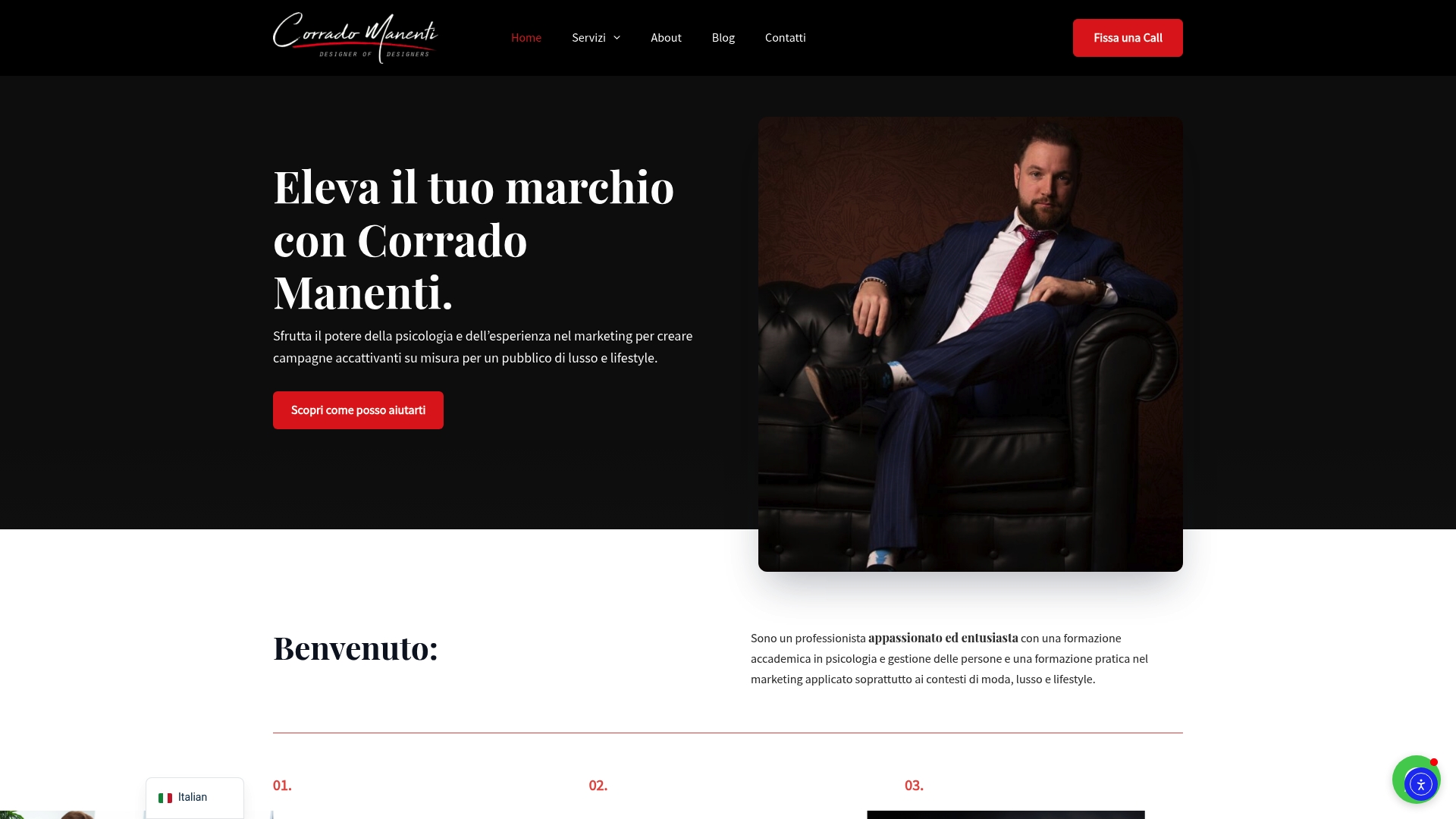Did you know that brands using authentic storytelling see up to 73 percent higher consumer trust compared to those relying on traditional marketing? With so many companies competing for attention, forging real connections is vital. Lifestyle brand storytelling taps into emotions, values, and identity, turning everyday products into meaningful parts of people’s lives. Understanding how stories shape brand perceptions can transform simple messaging into experiences that feel real and memorable.
Table of Contents
- Defining Lifestyle Brand Storytelling
- Core Elements Of Brand Narratives
- Psychology’s Role In Luxury Storytelling
- Building Authentic Audience Connections
- Strategic Storytelling Techniques For Impact
- Common Pitfalls And How To Avoid Them
Key Takeaways
| Point | Details |
|---|---|
| Authentic Brand Storytelling | Lifestyle brand storytelling goes beyond selling products, focusing on creating emotional connections with consumers that reflect their aspirations and values. |
| Core Narrative Elements | Successful brand narratives should include authenticity, emotional resonance, and consistent messaging across all touchpoints to foster meaningful engagement. |
| Psychological Impact | Effective storytelling triggers emotional responses, enhancing brand recall and trust, which are essential for forming deep consumer connections. |
| Avoiding Common Pitfalls | Brands should avoid inauthentic narratives and disconnection from core values to create impactful stories that resonate with audiences. |
Defining Lifestyle Brand Storytelling
Lifestyle brand storytelling transcends traditional marketing by creating narratives that deeply resonate with consumers’ aspirations, values, and personal identities. As research indicates, these narratives are not just about selling products but about crafting emotional connections that transform brands from mere commodity providers into meaningful lifestyle experiences.
At its core, brand storytelling involves strategically developing narratives that communicate a brand’s unique mission, heritage, and philosophical stance. According to research from communication studies, effective brand narratives highlight a company’s distinctive journey, values, and vision in ways that forge genuine connections beyond transactional interactions. These stories serve as powerful psychological bridges, allowing consumers to see themselves reflected in the brand’s ethos and trajectory.

The most compelling lifestyle brand stories possess several critical characteristics:
- Authenticity that reveals the genuine motivations behind the brand
- Emotional resonance that speaks to deeper human experiences
- A clear and compelling narrative arc
- Consistency across all brand touchpoints
- The ability to inspire and provoke meaningful engagement
To develop an impactful brand story, luxury brands must move beyond superficial messaging and create narratives that feel personal, transformative, and aligned with their audience’s deepest aspirations. Explore our guide on how to enhance brand storytelling to learn advanced techniques for crafting these powerful narratives that elevate brands from products to meaningful lifestyle statements.
Core Elements of Brand Narratives
Brand narratives are sophisticated psychological constructs that go far beyond simple marketing messages. According to research from communication studies, these narratives must strategically incorporate key elements that transform corporate communication into compelling storytelling. The foundation lies in articulating brand values and mission that provide a deeper context for the brand’s existence and purpose.
Research indicates that successful brand narratives contain several critical components. These include a compelling storyline that connects emotionally with the audience, a clear representation of the brand’s unique personality, and strategic use of data to substantiate the narrative’s authenticity. The most effective brand stories humanize the organization, attributing relatable characteristics that enable consumers to form meaningful connections.
The essential elements of powerful brand narratives include:
Here’s a summary comparing the essential elements found in effective lifestyle brand narratives:
| Element | Description | Example Aspect |
|---|---|---|
| Authentic Mission | Clear and genuine brand purpose | Social responsibility Heritage |
| Emotional Resonance | Story appeals to audience feelings | Aspirational identity Trust |
| Consistent Personality | Reliable and relatable brand character | Tone of voice Visual identity |
| Transparent Values | Open display of core beliefs | Ethics Community engagement |
| Narrative Coherence | Unified message across all touchpoints | Cross-channel alignment |
- A clear and authentic mission statement
- Consistent brand personality traits
- Emotional resonance and storytelling
- Demonstrable brand values
- Genuine and transparent communication
- Narrative coherence across all brand touchpoints
Understanding and implementing these core elements requires strategic insight and nuanced communication skills.
Explore our guide on mastering brand storytelling workflows to learn sophisticated techniques for developing narratives that truly connect with your target audience and elevate your brand’s communication strategy.
Psychology’s Role in Luxury Storytelling
In the realm of luxury brand communication, psychology serves as a profound catalyst that transforms storytelling from mere marketing into a deeply resonant emotional experience. According to research, effective brand narratives are ingeniously engineered to align with how the human brain naturally processes and receives information, creating powerful psychological connections that transcend traditional advertising approaches.
Authentic storytelling triggers specific neurological responses, activating emotional and sensory regions of the brain that foster trust and create meaningful consumer connections. By understanding psychological principles of perception and emotional engagement, luxury brands can craft narratives that don’t just communicate product features, but create immersive experiences that speak directly to consumers’ deepest aspirations and psychological needs.
The psychological dimensions of luxury brand storytelling include:
- Emotional triggering and sensory engagement
- Creating narratives that align with consumer identity
- Establishing trust through authentic storytelling
- Activating memory and long-term brand recall
- Generating neurological responses of pleasure and connection
- Transforming transactional interactions into meaningful experiences
Learn more about the psychological foundations of luxury branding to discover sophisticated techniques that leverage deep human insights and transform your brand’s narrative strategy into a powerful emotional journey.
Building Authentic Audience Connections
Authentic brand storytelling represents far more than a marketing strategy; it is a profound method of creating genuine human connections that transcend traditional transactional relationships. According to research from leading brand communication experts, authenticity emerges when brands develop narratives that genuinely reflect their core values and mission, creating a powerful bridge between corporate identity and consumer perception.
Research indicates that truly authentic stories have the extraordinary ability to captivate audiences by generating meaningful emotional memories. These narratives go beyond surface-level communication, instead crafting experiences that resonate deeply with consumers’ personal identities and aspirational worldviews. By revealing vulnerable, genuine aspects of their journey, brands can transform from distant corporate entities into relatable, trustworthy companions in consumers’ lives.
Key strategies for building authentic audience connections include:
- Transparency about brand origins and challenges
- Consistent representation of core values
- Sharing genuine, unfiltered brand experiences
- Demonstrating real commitment to social and ethical principles
- Creating narratives that invite audience participation
- Maintaining emotional integrity across all communication channels
Discover our comprehensive guide on understanding why brand storytelling works to unlock sophisticated techniques for creating narratives that genuinely connect with your audience and build lasting, meaningful relationships beyond traditional marketing approaches.
Strategic Storytelling Techniques For Impact
Strategic storytelling transcends traditional marketing by transforming brand narratives into powerful, purposeful communication experiences. According to research from brand communication experts, the most impactful stories are meticulously structured around clear objectives, compelling characters, and consistent messaging that resonates deeply with the target audience’s emotional landscape.
Effective brand narratives are distinguished by their emotional complexity and strategic architecture. Research indicates that successful storytelling goes beyond simple information delivery, instead creating immersive experiences that engage audiences through authentic, relatable journeys. By carefully crafting narratives that blend emotional depth with strategic intent, brands can create profound connections that transform passive consumers into active participants in their brand’s ongoing story.
Key strategic storytelling techniques include:
- Developing a clear narrative arc with meaningful progression
- Creating relatable brand protagonists and characters
- Integrating emotional complexity and vulnerability
- Maintaining consistent messaging across all touchpoints
- Designing stories that invite audience interpretation
- Balancing authenticity with strategic communication goals
- Utilizing sensory and emotional triggers
Explore our guide on mastering brand storytelling workflows to unlock sophisticated techniques that transform your brand’s narrative from a simple communication tool into a powerful strategic asset.
Common Pitfalls and How to Avoid Them
Brand storytelling is a nuanced art fraught with potential missteps that can dramatically undermine a brand’s communication strategy. Research highlights that the most critical pitfalls emerge from inauthenticity and emotional disconnection, which can transform potentially powerful narratives into forgettable, generic marketing messages that fail to resonate with audiences.
According to brand communication experts, the primary challenges in storytelling arise from brands attempting to construct narratives that feel manufactured or disconnected from their genuine identity. Audiences today are remarkably sophisticated, quickly detecting stories that lack emotional depth or true vulnerability. The most significant risk lies in creating narratives that prioritize promotional objectives over genuine human connection, resulting in stories that feel clinical, distant, and ultimately unconvincing.
Key pitfalls to avoid in brand storytelling include:
- Forcing narratives that don’t align with brand values
- Presenting overly polished, unrealistic brand representations
- Neglecting emotional complexity and genuine vulnerability
- Creating stories that feel transactional rather than transformative
- Inconsistent messaging across different communication channels
- Overlooking the audience’s actual lived experiences
- Failing to demonstrate genuine brand personality
Discover our comprehensive guide on understanding why brand storytelling works to learn sophisticated techniques for crafting narratives that authentically connect and truly engage your audience.
Elevate Your Lifestyle Brand Storytelling with Expert Insight
The challenge of creating authentic and emotionally engaging brand narratives is at the heart of lifestyle brand storytelling. You want to connect deeply with your audience by using storytelling techniques that build trust, resonate with their identity, and inspire action. Integrating psychological insights into your marketing approach can unlock this connection and transform your brand from a product provider into a meaningful lifestyle experience.
Mastering these storytelling principles and avoiding common pitfalls requires expert guidance that understands both the emotional and strategic sides of branding. Explore how Marketing Fashion strategies informed by psychology-driven marketing can help you craft authentic narratives that appeal directly to consumer aspirations and values.

Ready to turn your brand story into a powerful emotional journey that truly connects and converts? Discover personalized consulting solutions at Corrado Manenti to elevate your storytelling. Learn advanced techniques and digital innovations that keep your brand relevant in the competitive luxury and lifestyle markets by visiting Marketing Fashion and start transforming your narrative today.
Frequently Asked Questions
What is lifestyle brand storytelling?
Lifestyle brand storytelling is the practice of creating narratives that resonate with consumers’ aspirations, values, and personal identities, transforming brands into meaningful lifestyle experiences rather than just product providers.
Why is authenticity important in brand storytelling?
Authenticity is crucial in brand storytelling as it establishes genuine connections between the brand and consumers, enabling audiences to relate to the brand’s mission and values on a personal level.
How can emotional resonance enhance brand storytelling?
Emotional resonance enhances brand storytelling by appealing to the deeper feelings and experiences of the audience, creating memorable connections that foster loyalty and engagement with the brand.
What are some common pitfalls in brand storytelling?
Common pitfalls in brand storytelling include inauthenticity, emotional disconnection, and presenting overly polished narratives that fail to resonate with audiences, potentially leading to disengagement from the brand.



